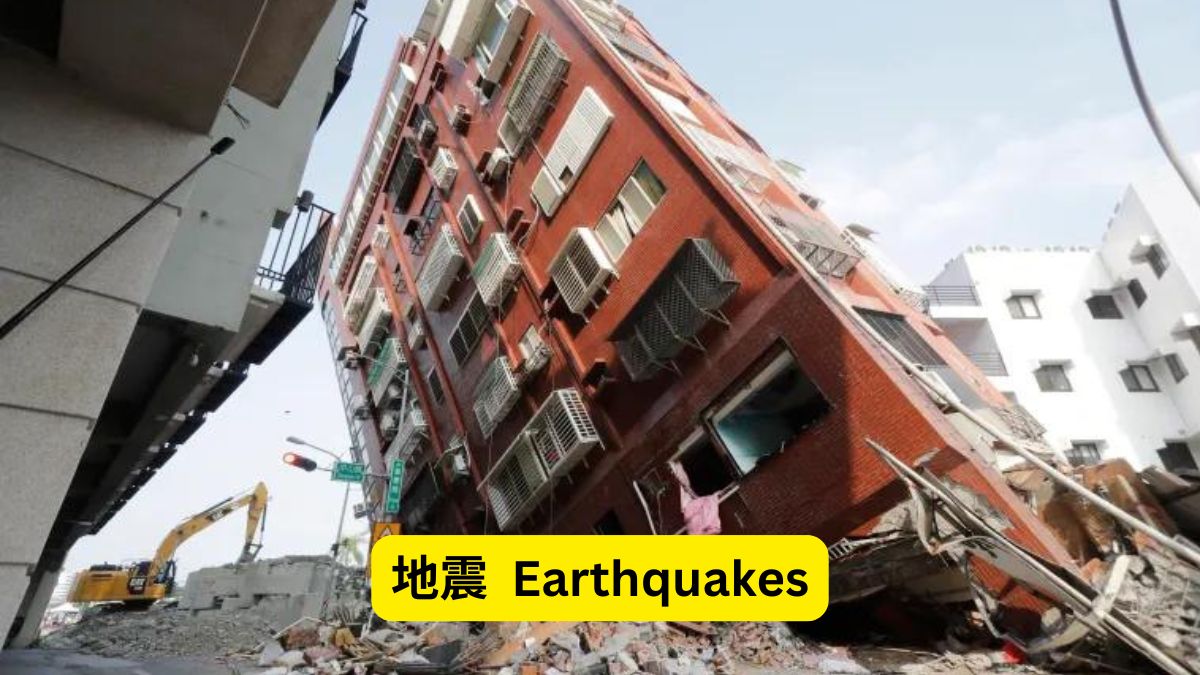Earthquakes are one of nature’s most powerful and unpredictable phenomena. They occur when there is a sudden release of energy in the Earth’s crust, causing the ground to shake. This release of energy can result in significant damage, making it crucial to understand earthquakes better. In this blog post, we will explore what earthquakes are, how they occur, their impact, and measures to prepare and protect ourselves.
What Are Earthquakes?
An earthquake is the shaking of the Earth’s surface caused by a sudden release of energy. This energy is usually stored in the Earth’s crust due to the movement of tectonic plates. When the stress on the edge of these plates overcomes the friction holding them together, it causes an earthquake. The point inside the Earth where the earthquake originates is called the focus or hypocenter. The point directly above it on the Earth’s surface is known as the epicenter.
How Do Earthquakes Occur?
Earthquakes occur due to the movement of tectonic plates. The Earth’s crust is divided into several large and small pieces called tectonic plates. These plates are constantly moving, but they can become stuck at their edges due to friction. When the stress on the edge overcomes the friction, there is an earthquake that releases energy in the form of seismic waves.
- Faults: Most earthquakes occur along faults, which are fractures in the Earth’s crust. There are different types of faults, including normal faults, reverse faults, and strike-slip faults. The type of fault affects how the ground moves during an earthquake.
- Plate Boundaries: Earthquakes are most common at the boundaries of tectonic plates. These boundaries can be divergent (plates moving apart), convergent (plates moving together), or transform (plates sliding past each other).
Measuring Earthquakes
Earthquakes are measured using seismographs. These instruments record the seismic waves produced by an earthquake. The magnitude of an earthquake is determined using the Richter scale or the moment magnitude scale (Mw). The Richter scale measures the amplitude of seismic waves, while the moment magnitude scale considers the energy released by the earthquake.
- Richter Scale: Developed by Charles F. Richter in 1935, this scale measures the magnitude of earthquakes on a logarithmic scale. Each whole number increase on the scale represents a tenfold increase in amplitude and approximately 31.6 times more energy release.
- Moment Magnitude Scale (Mw): This scale is more modern and provides a more accurate measure of an earthquake’s size. It takes into account the fault’s size, the amount of slip on the fault, and the rigidity of the rocks involved.
Impact of Earthquakes
Earthquakes can have devastating effects on communities, infrastructure, and the environment. The impact of an earthquake depends on various factors, including its magnitude, depth, distance from populated areas, and the local building codes and preparedness measures.
- Structural Damage: Earthquakes can cause buildings, bridges, and roads to collapse or suffer severe damage. Older structures that do not meet modern building codes are particularly vulnerable.
- Casualties and Injuries: Earthquakes can lead to loss of life and injuries. People can be hurt by falling debris, building collapses, and other earthquake-related incidents.
- Economic Impact: The economic impact of an earthquake can be substantial. The cost of rebuilding infrastructure, providing medical care, and supporting displaced populations can strain financial resources.
- Environmental Effects: Earthquakes can trigger landslides, tsunamis, and soil liquefaction. These secondary effects can cause additional damage and hazards.
Preparing for Earthquakes
Preparing for an earthquake can significantly reduce the risk of injury and damage. Here are some key steps to take:
- Emergency Plan: Create an emergency plan for your family. Include a communication plan, meeting points, and a list of emergency contacts.
- Emergency Kit: Prepare an emergency kit with essential supplies such as water, non-perishable food, a flashlight, batteries, a first aid kit, and important documents.
- Secure Your Home: Secure heavy furniture, appliances, and other items that could fall during an earthquake. Use straps or anchors to prevent them from tipping over.
- Know How to Drop, Cover, and Hold On: In the event of an earthquake, drop to your knees, cover your head and neck, and hold on to shelter until the shaking stops.
- Retrofit Your Home: If you live in an earthquake-prone area, consider retrofitting your home to meet seismic safety standards. This may involve reinforcing the foundation and securing the structure to prevent collapse.
Earthquake Safety During and After the Event
During an Earthquake:
- If you are indoors, stay inside. Drop to the ground, cover your head and neck, and hold on to shelter.
- If you are outside, move to an open area away from buildings, trees, and power lines.
- If you are driving, pull over to a safe location and remain inside the vehicle.
After an Earthquake:
- Check for injuries and provide first aid if needed.
- Be cautious of aftershocks, which can occur after the main quake.
- Inspect your home for damage and avoid using damaged utilities such as gas or water until they have been inspected by professionals.
- Follow instructions from local authorities and emergency services.
Conclusion
Understanding earthquakes is essential for preparedness and safety. By learning about how earthquakes occur, their impacts, and how to prepare and respond, we can reduce the risks associated with these natural events. Staying informed and prepared helps protect ourselves, our families, and our communities from the potential dangers of earthquakes.
